March 11 – April 18, 2014
Field Report
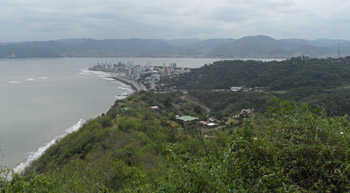
The very sparse rainy season persists. And now that it is late April, it is likely that it is wrapping up. The weather has been cooling off slightly, especially in the evenings, which is considered a sign that the dry season is approaching. Rumors of a possible El Niño developing later in the year are spreading through the scientific and international communities; even a couple of locals have mentioned it. Perhaps the incredibly light wet season foreshadows the heavy rains that are associated with El Niño activity in this part of the world? We’ll have to wait and see.
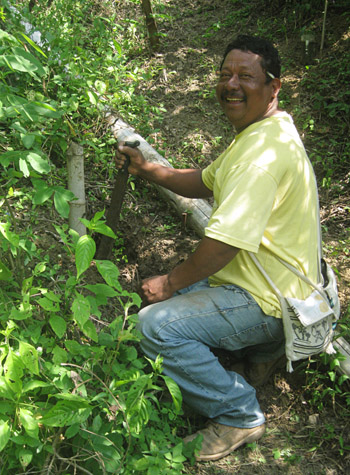

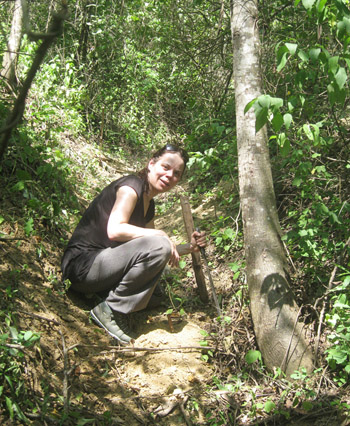
In the meantime, we have a solid crew of volunteers and have been making progress on a number of fronts related to the revegetation project, most notably with excellent tree production at the greenhouse and education involving collaboration with communities and children.
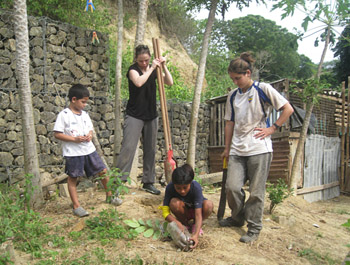

About 20% of the trees planted in 2013 at the Bellavista revegetation site died and we took a truckload of (forest species) trees to replant them and also fruit trees for local residents. In a new format for engaging community members we spent several days working directly with residents to plant trees at their homes. Residents selected which species they were interested in, and then we helped dig holes and plant the trees. As we worked, more and more people, especially children, joined in.
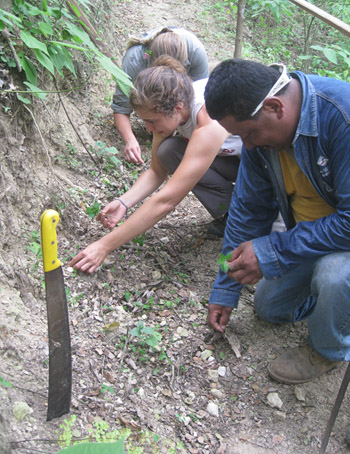
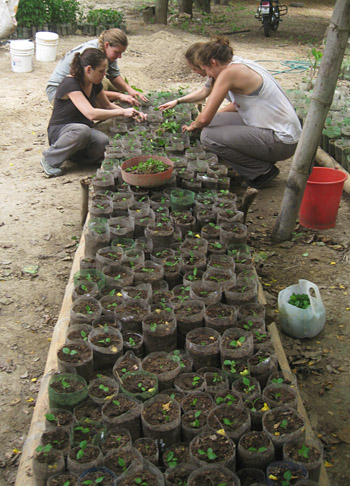
A friend of Planet Drum, Broche, alerted us that baby Guayacan trees had sprouted in the forest at the Cerro Seco nature reserve. We jumped at the opportunity to transplant the trees directly to bottles; otherwise they would certainly perish. In addition to hiking into the woods to search for the trees, we also needed to ready hundreds of bottles at the greenhouse to be able to transplant them quickly.

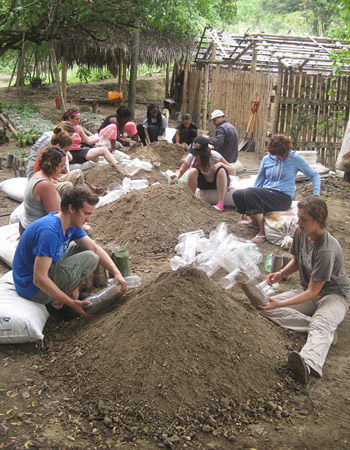
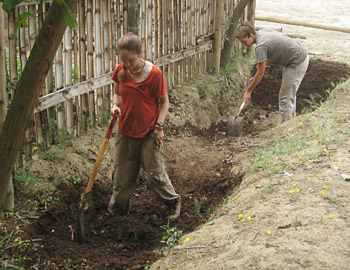
Fortunately, Nicola from Rio Muchacho called me at about the same time with a group of visitors who were interested in seeing the Planet Drum greenhouse operation. They helped us cut and fill bottles and then transplant trees.

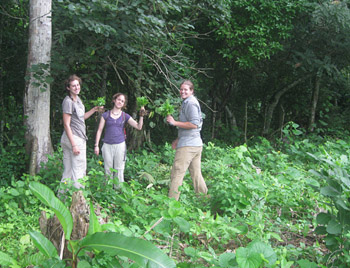
Then I got another tip about baby Cedro Amargo trees that had germinated in the thousands (millions?) near Rio Canoa, so we headed out for another excursion, this time in search of Cedros. Once again, hundreds more bottles were needed to accommodate the influx of baby trees.
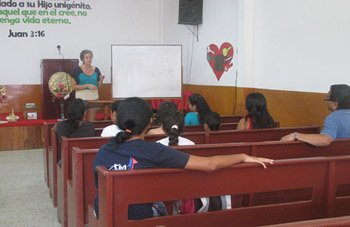
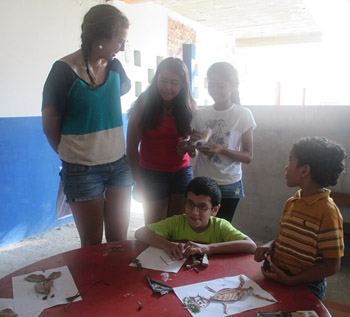

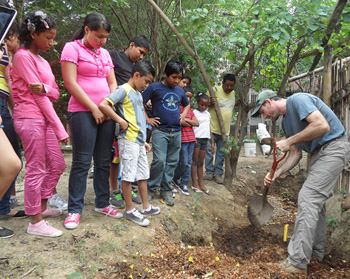
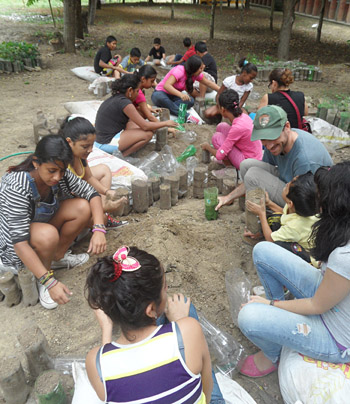
Filling bottles with the group of students. Photo by Lexie Carey.
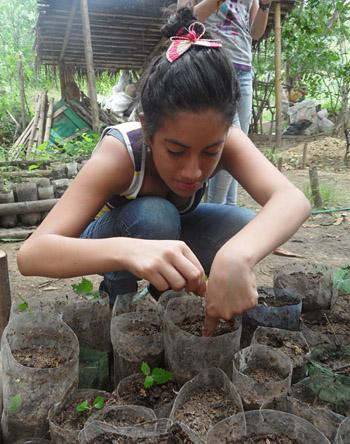

This time, Community Engagement Intern Allie came to the rescue with a group of students from the Alpha Omega School, who although on vacation were still participating in a church group. They requested that Allie give them a lecture on ecological education at their school/church and then were also interested in visiting the greenhouse. Allie provided them with a bioregionalism seminar one afternoon and the following week they took a fieldtrip to the Planet Drum greenhouse. The teachers have since requested that we assist them in getting compost production and a garden started. Allie will assist in setting up the potential further collaborations.
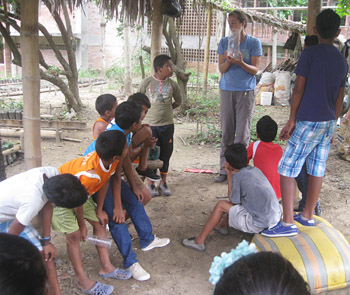
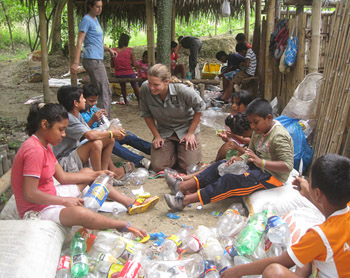

And finally, the children from Bellavista were so excited to help us plant trees in their community that we decided it would be a good idea to invite them to the greenhouse to get to learn more about the revegetation process. Bellavista is a very marginal community and many of the residents would qualify as living in extreme poverty (less than $1/day). The children were intense to work with. For most of them, simply taking the local bus ($0.12/child) was a momentous event, let alone getting to explore the greenhouse and then help contribute to something new and productive. Keeping them focused on the task at hand was a challenge, but they all left excited about the adventure they had embarked on.


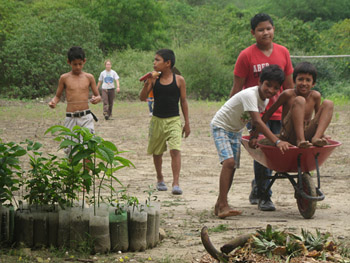
Finding germinating trees in the local forests in combination with all of the visiting groups at the greenhouse plus the solid work of the volunteer crew has started off 2014 with some impressive tree production.


One final note is that the Planet Drum land in Pajonal appears to qualify for being part of the Socio-Bosque government program that pays land owners for preserving forest. As part of the process for enrolling in the program, it is necessary to visit the land with a forest inspector who takes GPS points along the perimeter of the land and nails metal markers to trees along the way. Given the remote location of the land, this is a bit of an ordeal and an entire day was dedicated to hiking, macheteing, and bushwhacking around the land.
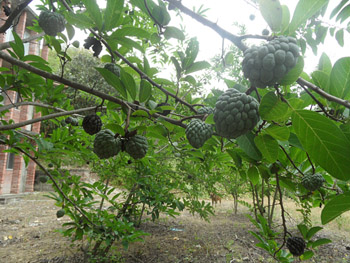
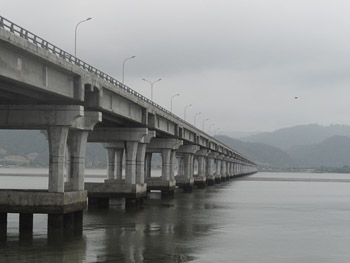
Moving forward, other members of other communities in Bahia have been requesting trees and the goal is to do more direct revegetation work with residents. Also, schools will resume classes in May and we need to be prepared to receive groups of visiting students for bioregional workshops. Allie has assisted by visiting pretty much every educational institution in Bahia to see what how much interest there is in collaborating with Planet Drum, and reception across the board has been positive.
Pásalo bien,
Clay

Your point of view caught my eye and was very interesting. Thanks. I have a question for you.
Can you be more specific about the content of your article? After reading it, I still have some doubts. Hope you can help me. binance